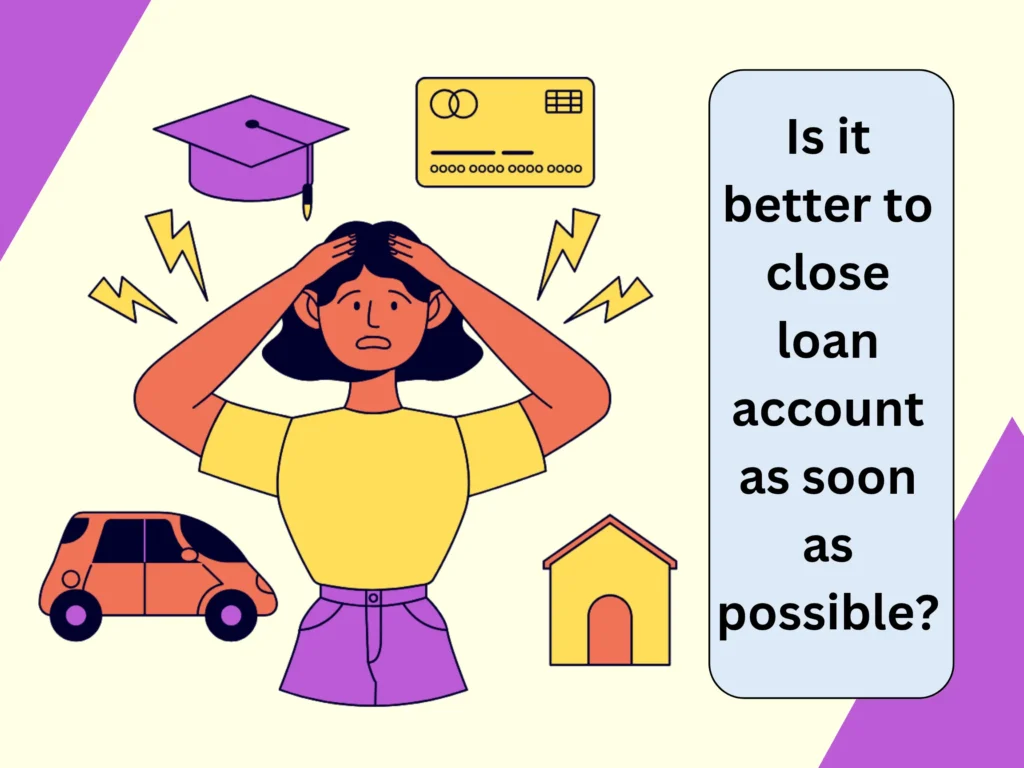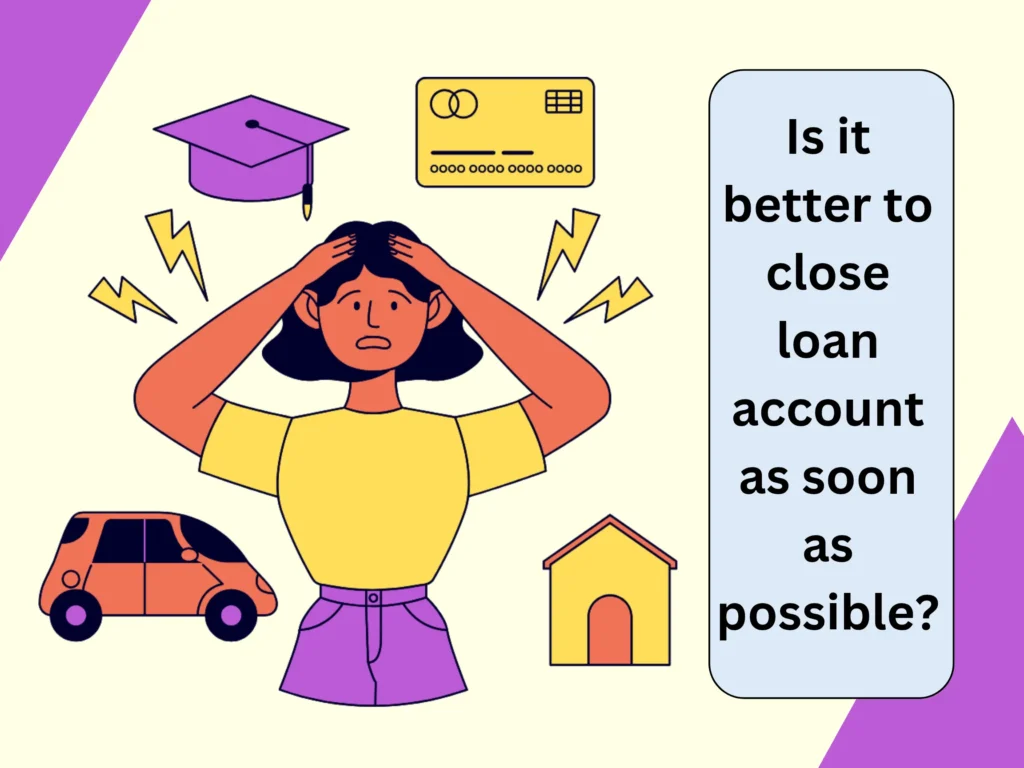Are you thinking of closing your personal loan account?
Or is it better if you leave it as it is and wait for its tenor to be over?
It’s natural that all of us want to have a debt-free life without worrying much about the payment obligations such as EMIs, you know!

The sooner you liquidate the loan, the better you are, as it will set you free from any debts. Instead of paying interest, you can earn interest if you have no EMI to worry about.
We are talking about the early liquidation of a personal loan before its tenure. Will that be a wise decision?
We will try to bring out some of the most important things to watch out and the pros and cons of an early closing of a personal loan.
Si, Let’s see what’s in it for us.
A personal loan
A loan that meets your emergency fund requirement. Usually, a personal loan is given against your salary and most of the time it’s payment tenor is upto 6 years.
About it’s interest rate, it’s quite compatible as we have abundant number of banks that provide the facility for their clients. Across the banks, you can expect the rate to be in between 9% to 12%.
The good news is that you have the freedom to choose which bank to go for.
For an employed person, it’s quite easy to get a personal loan nowadays. The online platform really boosts the loan processing mechanism, with less documentation available at almost every bank you could possibly think of.
Usually, a personal loan is an unsecured loan given against the salary, so there is no security or collateral that you need to produce. Its terms and conditions are required to be known by the loanee (the person who takes the loan).
Under its terms and conditions, different banks have different premature closure fees, or some banks might levy charges for foreclosure. The rate at which these charges depends from bank to bank.
It varies from 2% to even 16% of the prepaid amount. PSB banks such as SBI and PNB. They do not have high foreclosure charges as compared to private sector banks, which can go up manyfold.
Click to learn more about SBI personal loans.
You might end up paying more
Yes, it’s true that you might end up paying more.
See, there will be prepayment penalties as well as foreclosure charges. Banks used to give certain concessions, but not to all.
For example, if you are an existing customer who have already used the Xpress credit facility (Personal loan) of SBI, you might get a concession on the prepayment penalty if you get another Xpress credit loan.
Here, in this case, the closure of the previous loan will be without penalty as per the bank’s norms.
Otherwise, the bank will impose those penalties as usual.
For SBI and other PSUs, these charges are minimal. It will be around 2–3% only. That means per lakh, it will come around ₹2000 to ₹3000 only.
So, opting for foreclosure of a personal loan with these banks may be good option. You will not end up paying more than you anticipated.
But, when you maintain a personal loan at other banks where the foreclosure charge is in the range of 10% and above, you will end up paying more. Per lakh, you will have to pay above ₹10000. It will cost you heavily.
Here are some of the pros and cons of a personal loan foreclosure. It might give you a clearer idea on how these loans may not so good at all.
| Pros: Personal Loan Foreclosure | Cons: Personal Loan Foreclosure |
| It will give you a debt-free life. | Charges may be higher than you anticipated. |
| More funds are available at your disposal so more investment. | You may end up paying a higher loan closure charge. |
| Income generation opportunity. | Your CIBIL score may get better. Pre-closure of loans usually gets a better score. |
| Can streamline the fund flow of your account. This will enable you to use your fund in a productive purpose. |
How to proceed with the closure of the account?
It’s simple to initiate the closure of your personal loan account. Most banks prohibit the closure of accounts within a year.
Banks normally give you a time period when you will be able to foreclose your personal loan account. By then, you simply write an application to the bank or fill out the foreclosure form available at the bank and submit it.
You will get the details of your account. These might include
- Present outstanding
- Accrued interest
- Foreclosure charge
- Prepayment penalties
All these will let it to the exact foreclosure amount of your personal loan account on a specific day. The amount may change the next day.
Here’s how you should go for:
- Get the statement of account or if you have online banking, check out the present outstanding of your loan account.
- Visit the bank and enquire about the prepayment penalty and foreclosure charge.
- Now write an application to close the loan account.
- Present a cheque with the loan closure amount clearly written on it.
- After closing of account is done by your bank, ask for loan closure certificate or no due certificate.
- Get the account statement once again and check if it’s done successfully. You may see the discharge amount and date on it
Conclusion
Now that we have seen its pros and cons. I would definitely suggest going for the closure of the loan account if you have extra funds.
If the foreclosure charge is way too high, then see if it’s less than the normal route which is to wait out to exhaust the loan tenor.
If the closure amount is lesser, it’s better to close to avoid the long-term interest compounding effect.
When one does take financial assistance from the bank, it’s because he is in need of funds that he can not cover on his own. But, getting a loan is not the solution. He has to think of a better plan to liquidate it with maximum benefit.
If it’s a term loan that runs for 5 to 6 years, there will be an accumulation of a huge interest portion at the end of the tenor. To avoid this, foreclosure or early closure of the account is not possible. Then make an investment for the same period to nullify the asking interest rate.


